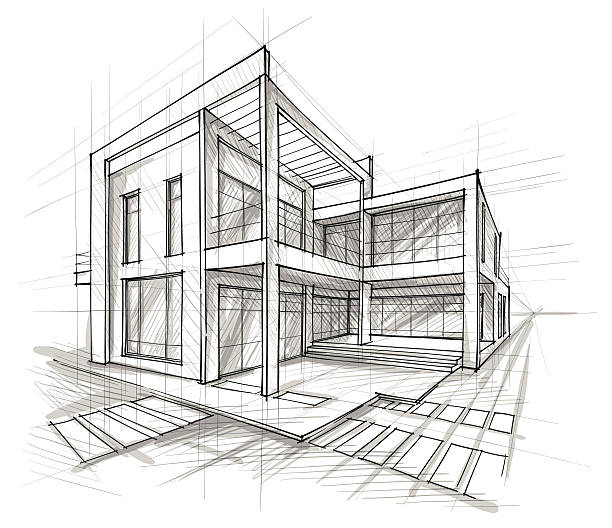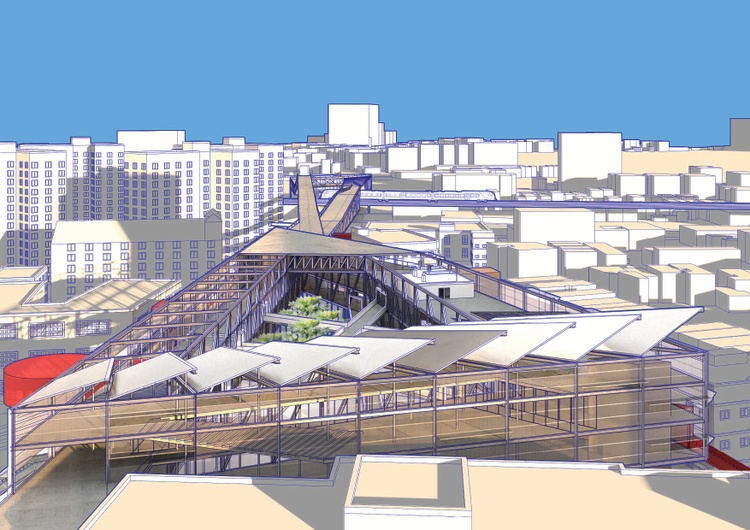Why CDA Architects Are Leaders in Architectural Layout and Technology
Why CDA Architects Are Leaders in Architectural Layout and Technology
Blog Article
A Detailed Overview of Building Styles and Their Influence on Modern City Planning and Development
Building styles have actually long acted as a mirror to the social values and technical improvements of their time, playing a critical duty in shaping contemporary city preparation and development. From the magnificence of Neoclassicism to the practical method of Brutalism, each style has actually presented unique ideas that affect city aesthetics and capability. As modern obstacles develop, including sustainability and neighborhood demands, recognizing these historical frameworks becomes vital. The resulting discussion not only informs future layout techniques yet also elevates significant questions regarding the balance between heritage and innovation in our progressing urban landscapes.
Historical Review of Architectural Designs

As cultures transitioned through the Center Ages, Gothic style arised, identified by its verticality and elaborate describing, mirroring the spiritual ambitions of the period. The Renaissance noted a revival of classical ideals, merging art and architecture in ingenious methods that affected subsequent styles across Europe.

Today, architectural styles continue to progress, driven by globalization and sustainability problems, mirroring a dynamic interaction between heritage and advancement. This historic overview highlights the importance of style as a mirror of societal development and as a catalyst for metropolitan growth.
Key Architectural Styles Explained
The diversity of building styles shows the myriad impacts that form our constructed atmosphere, each symbolizing unique qualities and cultural relevances. Secret architectural designs consist of Timeless, Gothic, Baroque, Modernism, and Postmodernism, each standing for special historic contexts and visual approaches.
Classic architecture, rooted in old Greece and Rome, stresses balance, percentage, and using columns (cda architects). In comparison, Gothic design, growing in the center Ages, is characterized by pointed arches, ribbed vaults, and flying buttresses, creating a heavenly top quality in cathedrals. Baroque design, arising in the 17th century, is noted by magnificence, sophisticated embellishment, and a dynamic interaction of light and shadow
Innovation, which acquired energy in the early 20th century, focuses on function over kind, utilizing new materials like steel and glass to produce minimalist structures. Postmodernism, reacting against the austerity of Innovation, welcomes eclecticism and historic referral, frequently integrating lively components and irony.

Effect On Urban Preparation
In forming the advancement of cities, building designs dramatically affect metropolitan planning choices. The option of building style often determines the looks, functionality, and general personality of city settings.
Moreover, building styles can affect zoning policies and land make use of policies. Urban coordinators have to consider the dominating architectural patterns when developing areas, ensuring that brand-new developments balance with existing frameworks. This consideration cultivates cohesive metropolitan landscapes and boosts area identification.
The application of particular building styles can additionally influence socioeconomic variables within a city. As an example, high-end contemporary layouts may draw in upscale residents and companies, resulting in gentrification, while extra affordable housing services could prioritize sensible and lasting styles to suit varied populations. Ultimately, the interplay This Site between architectural styles and urban planning produces vibrant cities that mirror both historic context and modern requirements, shaping the lived experiences of their citizens
Sustainability and Modern Design
Architectural designs play a crucial role in attending to modern obstacles, especially in the realm of sustainability. As city areas increase and environmental worries heighten, modern style progressively welcomes lasting design principles that prioritize power efficiency, resource preservation, and minimal ecological influence.
Contemporary architectural movements, such as biophilic style and green design, advocate for structures that integrate with their environments, making use of all-natural materials and promoting biodiversity. These styles typically incorporate eco-friendly energy sources, such as solar panels and wind turbines, to reduce reliance on nonrenewable fuel sources and reduced carbon footprints.
Moreover, the combination of innovative modern technologies, such as wise structure systems, boosts energy management, optimizing source usage while ensuring occupant convenience. Innovative water administration methods, consisting of rainwater harvesting and greywater recycling, further add to sustainable metropolitan settings.
Especially, sustainability extends beyond ecological issues; it incorporates social and financial dimensions as well. By cultivating community wellness and advertising inclusivity, modern building designs straighten with lasting development objectives. The development of architectural techniques proceeds to form durable cities that not just fulfill the needs of the existing yet also guard the future for generations to come.
Area Involvement in Style
Neighborhood involvement in layout works as a vital bridge in between designers and the populations they serve, guaranteeing that the constructed atmosphere mirrors the needs and goals of its users. This joint procedure welcomes community participants to add their understandings and choices, promoting a feeling of possession and obligation toward the spaces they occupy.
Efficient community interaction employs different techniques, such as workshops, surveys, and look at more info public discussion forums, to gather diverse point of views. These methods help with a two-way dialogue, permitting designers to understand regional contexts while equipping homeowners to articulate their issues and desires. This inclusivity not just enhances the layout top quality yet likewise promotes social equity by dealing with the distinct difficulties faced by marginalized teams.
In addition, community involvement can cause ingenious services that might not emerge in a typical design process. By integrating neighborhood expertise and cultural worths, architects can produce rooms that reverberate even more deeply with customers, boosting functionality and sustainability. Eventually, prioritizing neighborhood involvement in layout processes leads to atmospheres that support social communications, assistance wellness, and strengthen neighborhood connections, thus playing a crucial role in forming modern urban landscapes.
Conclusion
Building designs have actually profoundly affected contemporary city planning and development, mirroring developing cultural and technological contexts. As cities continue to grow and adapt, the recurring discussion between architectural heritage and contemporary style principles will continue to be vital in creating comprehensive, vivid areas that boost top quality of life and advertise social equity.
Report this page